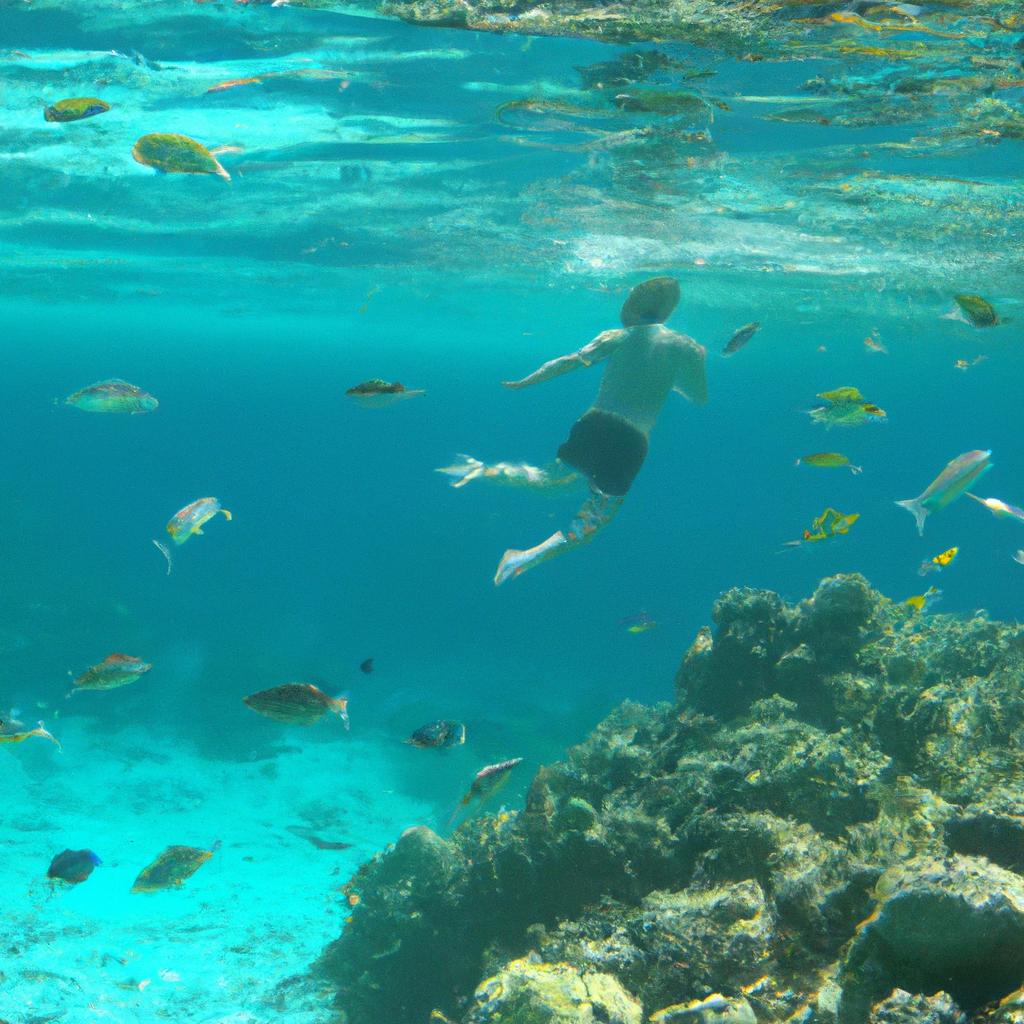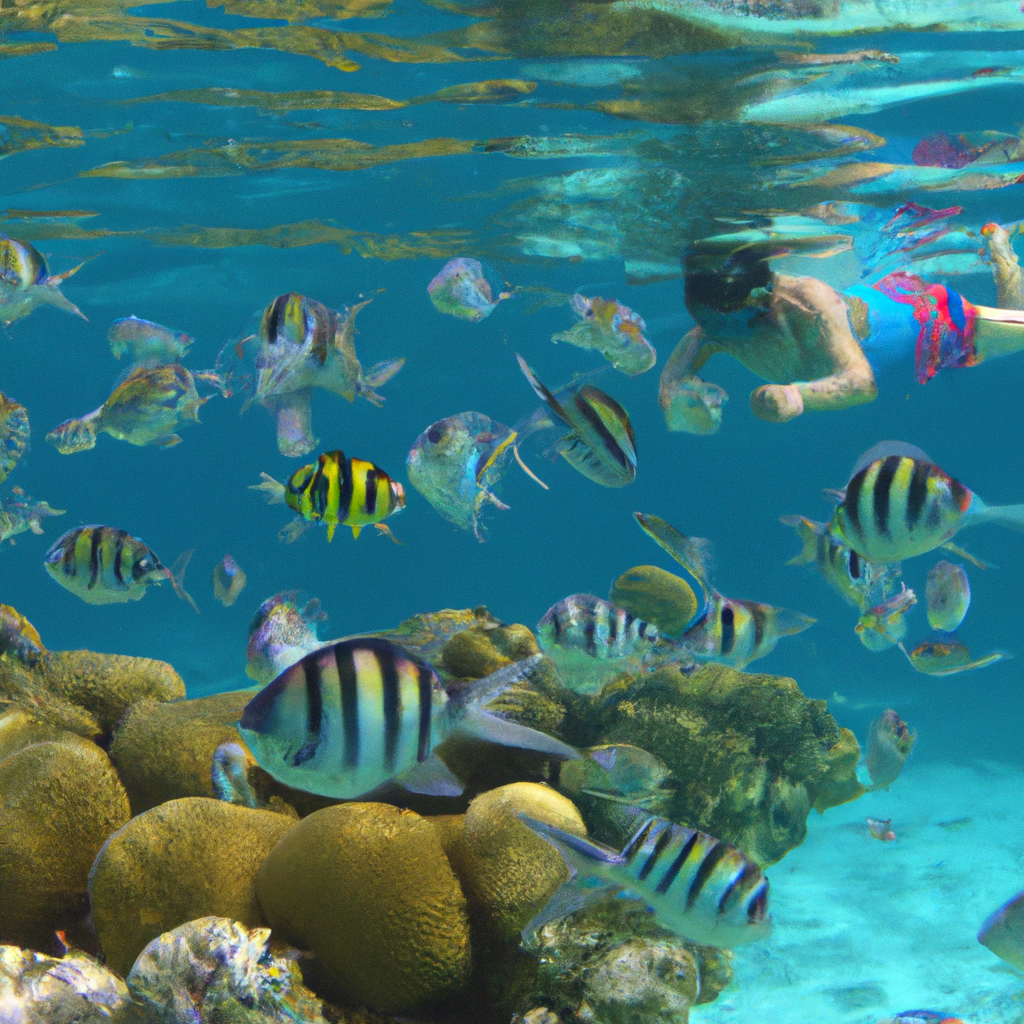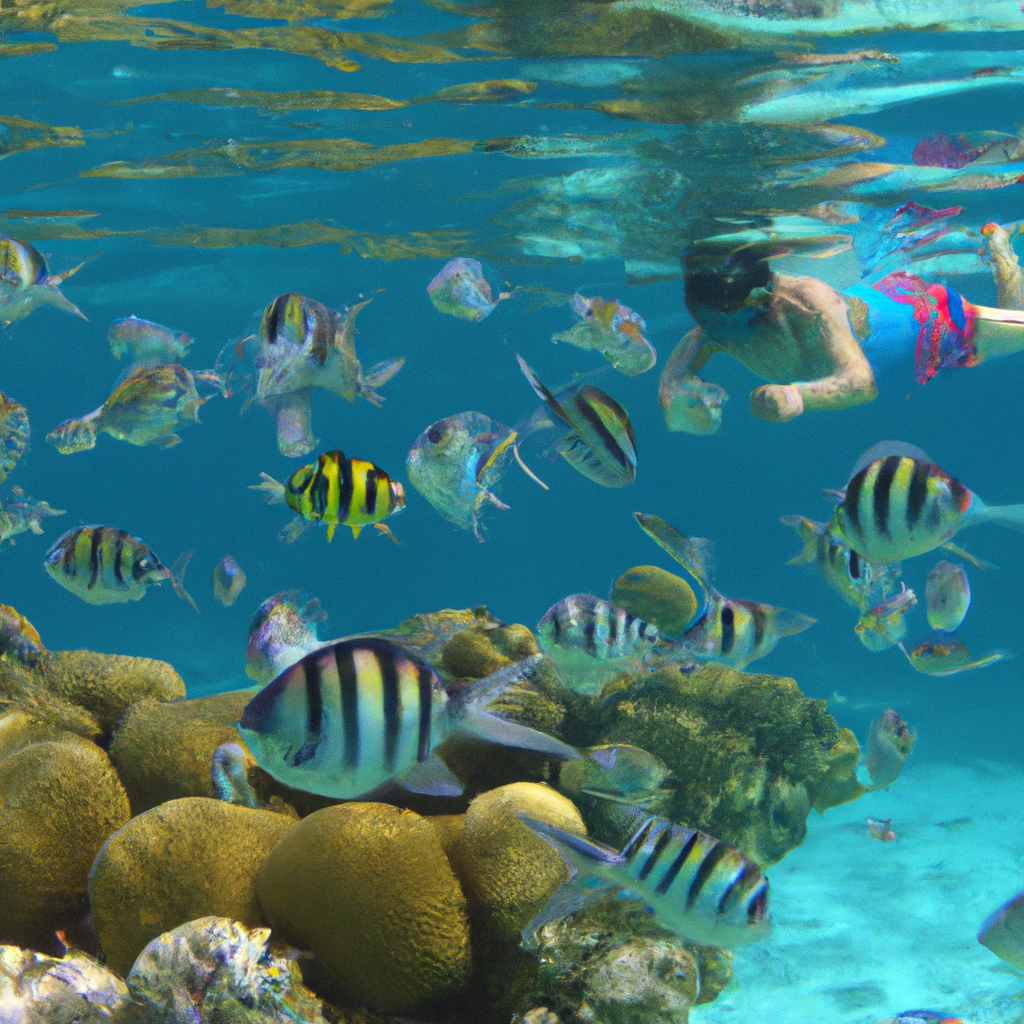Imagine exploring the vibrant underwater world, surrounded by a kaleidoscope of colorful fish and intricate coral reefs. With Snorkeling Adventures, you can embark on a exhilarating journey like no other. Whether you’re a beginner or an experienced snorkeler, this immersive experience promises to transport you to an enchanting realm beneath the waves. From tropical destinations to hidden gems, join us as we delve into the magic of snorkeling. Put on your snorkel mask, grab your fins, and get ready to embark on an adventure that will leave you breathless.
Snorkeling Adventures
Snorkeling is a thrilling and immersive activity that allows you to explore the underwater world. Whether you are a beginner or an experienced snorkeler, there are endless possibilities for incredible adventures. From vibrant coral reefs to fascinating marine life, snorkeling destinations around the world offer breathtaking experiences. In this article, we will dive into the best snorkeling destinations, provide tips for snorkeling, guide you in choosing the right gear, explain the basics of snorkeling, highlight snorkeling etiquette and safety, discuss snorkeling with marine life, and explore advanced snorkeling techniques.
Best Snorkeling Destinations
-
The Great Barrier Reef, Australia: With its extensive coral reef system and diverse marine life, the Great Barrier Reef is a dream destination for snorkelers. The crystal-clear waters allow for excellent visibility, and swimming among colorful fish, turtles, and rays is an unparalleled experience.
-
The Maldives: Renowned for its luxury resorts and stunning beaches, the Maldives also offers incredible snorkeling opportunities. The warm, turquoise waters are home to an abundance of marine species, including manta rays and whale sharks. Snorkeling here feels like diving into an untouched paradise.
-
Hawaii, USA: The islands of Hawaii boast some of the most accessible and awe-inspiring snorkeling spots. The volcanic rock formations create an underwater landscape teeming with colorful fish, vibrant corals, and even dolphins. Hanauma Bay and Molokini Crater are particularly popular snorkeling destinations.
-
Palawan, Philippines: Palawan’s hidden gem, the Tubbataha Reefs Natural Park, is a UNESCO World Heritage Site and a snorkeler’s paradise. Its pristine coral reefs are home to over 1,200 marine species, including turtles, reef sharks, and colorful reef fish. Exploring this underwater wonderland is an unforgettable experience.
Tips for Snorkeling
Snorkeling can sometimes feel overwhelming, especially for beginners. Here are some tips to enhance your snorkeling experience and make it more enjoyable:
-
Choose the Right Fit: When selecting your snorkeling gear, make sure the mask fits snugly and doesn’t leak. A tight fit will prevent water from entering the mask, allowing you to focus on exploring the underwater world.
-
Practice Proper Breathing: Breathing through a snorkel tube may feel strange at first. Take slow and deep breaths, inhaling and exhaling steadily to relax and conserve energy. Avoid breathing too rapidly, as it can lead to a foggy mask.
-
Familiarize Yourself with the Snorkeling Area: Before entering the water, take a moment to assess the surroundings. Look for potential hazards, such as sharp rocks or strong currents. Understanding the layout of the area will make your snorkeling adventure safer and more enjoyable.
-
Stay Hydrated: Snorkeling can be physically demanding, especially under the sun. Remember to drink plenty of water before and after your snorkeling session to stay hydrated and to avoid dehydration.

Choosing Snorkeling Gear
Selecting the right snorkeling gear is essential for a comfortable and enjoyable experience. Here are the key pieces of gear you’ll need:
-
Mask: A well-fitting mask with a silicone skirt is crucial to ensure a watertight seal. The mask should cover your nose and eyes, allowing for a clear field of vision.
-
Snorkel: Look for a snorkel with a comfortable mouthpiece and a splash guard to prevent water from entering. Some snorkels also have a purge valve for easy clearing of water.
-
Fins: Fins provide propulsion and maneuverability, making it easier to navigate the water. Choose fins that fit snugly but still allow for movement and flexibility.
-
Wetsuit/Rash Guard: Depending on the water temperature, you might need a wetsuit or a rash guard for protection and insulation. These garments also offer added sun protection.
-
Defogging Solution: Applying a defogging solution to your mask before each snorkeling session prevents fogging, ensuring clear visibility underwater.
The Basics of Snorkeling
Snorkeling is an accessible sport suitable for all ages and skill levels. Here are the fundamental techniques and skills to master:
-
Clearing Your Mask: During your snorkeling adventure, your mask may fill with water. To clear it, tilt your head back slightly, press the top of the mask against your forehead, exhale sharply through your nose, and then resume breathing normally.
-
Equalizing Your Ears: As you descend into deeper waters, the pressure on your ears increases. To equalize the pressure and prevent discomfort, pinch your nose and gently blow through it while keeping your mouth closed.
-
Kicking Technique: Practice using your legs and fins to propel yourself through the water. Use a gentle and controlled frog kick or flutter kick, keeping your movements fluid and efficient.
-
Surface Diving: Surface diving allows you to explore the underwater world more closely. Take a deep breath, submerge your head, and kick your legs to dive down. Remember to equalize your ears as you descend.

Snorkeling Etiquette
Respecting the marine environment and fellow snorkelers is essential to ensure a positive and sustainable snorkeling experience. Consider the following etiquette guidelines:
-
Do Not Touch: Avoid touching or standing on corals, as they are fragile and easily damaged. Touching marine life can also be harmful, both to the animals and potentially to yourself.
-
Keep a Safe Distance: Give marine creatures their space and observe from a distance. Approaching too closely can stress or scare them, potentially leading to defensive behaviors.
-
Avoid Standing on the Reef: When standing on the seabed, be cautious not to accidentally step on or damage the coral reef. Use proper swimming techniques and buoyancy control to stay afloat.
-
Do Not Feed Marine Life: Feeding marine life disrupts their natural behavior and diet. It can also encourage aggressive behavior and dependency on humans.
Snorkeling Safety
While snorkeling is generally considered a safe activity, it’s essential to prioritize safety to avoid any potential risks. Here are some safety tips to keep in mind:
-
Snorkel with a Buddy: It’s always safer to snorkel with a partner. Having someone nearby can provide assistance in case of emergencies or unexpected situations.
-
Check the Weather: Before heading out for a snorkeling adventure, check the weather forecast. Snorkeling in rough or stormy conditions can increase the risk of accidents.
-
Know Your Limits: Snorkel within your comfort zone and only venture as far as your skill level allows. Avoid deep water or strong currents if you’re not confident in your swimming abilities.
-
Stay Hydrated and Protected: Apply waterproof sunscreen to protect your skin from the sun’s harmful rays. Additionally, drink plenty of water to avoid dehydration, especially in warm climates.
Snorkeling with Marine Life
One of the most rewarding aspects of snorkeling is the chance to witness the beauty of marine life up close. Here are some tips for snorkeling with marine creatures:
-
Observe from a Distance: Respect the personal space of marine animals. Observe them quietly and avoid sudden movements that may startle them.
-
Do Not Touch or Chase: Maintain a respectful distance and resist the urge to touch or chase after marine life. This behavior can stress the animals and disrupt their natural habitat.
-
Do Not Feed: Feeding marine creatures can be detrimental to their health and can change their natural behaviors. Appreciate them in their natural environment without interfering.
-
Educate Yourself: Research the marine life in the area you’ll be snorkeling in. Knowing more about the behavior and habits of different species will enhance your snorkeling experience and allow for a more informed observation.
Snorkeling Techniques
For experienced snorkelers looking to enhance their skills and explore new possibilities, here are some advanced snorkeling techniques:
-
Free Diving: Free diving involves diving beneath the surface without the aid of breathing apparatus. It requires proper breath control, equalizing techniques, and efficient swimming techniques.
-
Underwater Photography: Capturing the beauty of the underwater world through photography can be a rewarding experience. Invest in an underwater camera or a waterproof housing for your existing camera to immortalize your snorkeling adventures.
-
Night Snorkeling: Night snorkeling offers a unique perspective on the underwater world. Through the use of underwater flashlights, you can observe nocturnal marine creatures and experience a completely different atmosphere beneath the surface.
-
Advanced Breathing Techniques: Dedicated snorkelers can explore advanced breathing techniques, such as diaphragmatic breathing, which allows for greater relaxation and breath control underwater.
Snorkeling for Beginners
For those new to snorkeling, it’s important to start with the basics and gradually build your skills and confidence. Here are some beginner-friendly tips:
-
Choose a Calm Location: Begin your snorkeling journey in calm and shallow waters, such as protected bays or lagoons. These areas offer a gentle introduction to snorkeling and allow you to practice in a safe environment.
-
Practice in a Pool: Before venturing into the open water, practice and familiarize yourself with your gear in a swimming pool. This controlled environment allows you to adjust your equipment and work on your snorkeling techniques.
-
Stay Relaxed: Many beginners find it challenging to relax while snorkeling. Focus on steady breathing and take breaks if you feel anxious or overwhelmed. Remember, snorkeling is meant to be enjoyable, so take your time and go at your own pace.
-
Seek Professional Instruction: If you’re feeling unsure or want to develop your skills further, consider taking a snorkeling lesson. Professional instructors can guide you through the basics and provide valuable tips and techniques to enhance your snorkeling experience.
With the right destination, gear, and techniques, snorkeling can unlock a world of breathtaking wonders beneath the surface. Whether you are a beginner or an advanced snorkeler, there is always something new and exciting to discover. So grab your snorkeling gear, dive into the crystal-clear waters, and embark on an unforgettable snorkeling adventure.
